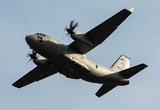Ukraine fields 5,000 homegrown drones amid Iran's debut of advanced Shahed-238 UAV
The Shahed-238 was developed based on the Shahed-136, which has been widely deployed by Russia during its invasion of Ukraine. (Photo: Iranian state media)
Ukraine has armed its forces with more than 5,000 homegrown drones, but Iran's unveiling of the Shahed-238 – an advanced iteration based on the widely deployed Shahed-136 – could pose challenges to Ukraine’s defence strategies.
In the latest demonstration of domestic UAV production capability, Ukraine has sent more than 2,000 homegrown drones to its forces, alongside 3,000 first-person view (FPV) crafts. As revealed by Ukraine Minister of Digital Transformation Mykhailo Fedorov on X (formerly Twitter) last weekend, the 2,000 Ukraine-made drones from the state have been handed over to logistics forces.
‘The batch included “birds” exclusively of Ukrainian production. Among them are copters and aircraft-type UAVs: reconnaissance, kamikaze and reusable bombers. Keep supplying the Defence Forces,’ Fedorov’s posts read.
Related Articles
Rafael ready to counter Iran’s hypersonic threats, says company at Paris Air Show
Iran demonstrates improved missiles and tests capabilities and practices as part of two-day exercise
Dubai Airshow 2023: Chinese AR-2000 large ship-borne UAV makes debut
One of the platforms visible on the images posted by the minister showed what looked like the Leleka LR mini fixed-wing drone designed for surveillance and artillery fire adjustment tasks. According to Shephard Defence Insight, although a Ukrainian design, the Lelka LR has recently been manufactured in Czechia. The UAV was unveiled in early November by Ukraine, and it featured similar maintenance algorithm and software as the Leleka-100.
Photos posted with the announcement also revealed that the shipment largely included quadcopter-type UAVs. The Ukrainian armed forces have been using such drones for a variety of missions in the war against Russia, including bomb strikes on enemy positions.
2,000+ Ukraine-made drones from the state are handed over to logistics forces. The batch included “birds” exclusively of Ukrainian production. Among them are copters and aircraft-type UAVs: reconnaissance, kamikaze reusable bombers. Keep supplying the Defense Forces. pic.twitter.com/Pv52YxjhYJ
— Mykhailo Fedorov (@FedorovMykhailo) November 18, 2023
A couple of days after Fedorov’s announcement, the Ukraine24 fundraising organisation announced on X that the first 3,000 FPV drones purchased under Operation Unity had been sent to the front line. Every UAV has been equipped with Ukrainian ammunition and been distributed among 19 military units, the posts claimed.
The deployment of the large number of drones came shortly after Ukrainian officials expressed intentions to ramp up domestic UAV production to tens of thousands per month.
New Iranian drone could cause headache for Ukraine
On 19 November, at the Ashura Aerospace Science and Technology University in Tehran, Iran officially unveiled a new version of its well-known Shahed expandable UAV, the Shahed-238. The platform was also shown with new guidance systems.
The new version was developed based on the Shahed-136, which has been widely deployed by Russia during its invasion of Ukraine. Moscow also used the drone to attack Kyiv in October 2022. The UAV was understood to have been used in the attack on Pacific Zircon in November 2022, MV Mercer Street in the Gulf of Oman on 30 July 2021 and Aramco facilities in Saudi Arabia in 2019.
Based on reports and a video released by official Iranian media outlets, the Shahed-238 was presented in three versions with different guidance systems. According to those reports, one version was equipped with infrared/optical and, presumably, radar guidance systems.
Supreme Leader Ali Khamenei visiting the Ashura Aerospace Science and Technology University, Tehran, on November 19. (Video: Rasadkedeh on YouTube)
The fuselages of all three drones exhibited an unusual black hue colour, uncommon for Iranian UAVs, potentially suggesting the use of radio-absorbing materials – there has been no confirmation of this, however.
The extent of Russia's involvement in the design of these new UAVs remains uncertain. The Wall Street Journal reported earlier this year that Moscow and Tehran had been developing an improved Shahed-136 model that could be produced in a joint facility.
Another report said that Iran and Russia were planning to build a new drone factory in Yelabuga, Russia, that could make at least 6,000 Iranian-designed drones to be used in the Russo-Ukraine War. The plant could be fully operational early next year, according to Iranian media reports.
Considering all of the above, the Shahed-238 could likely find its way onto the Ukrainian battlefield once produced in large enough numbers.
Related Equipment in Defence Insight
More from Dubai Airshow 2023 | View all news
-
![South Korea and Boeing to jointly research long-endurance aerial UAVs]()
South Korea and Boeing to jointly research long-endurance aerial UAVs
Boeing and South Korea have solidified plans that would see Boeing UAV design and technology capabilities implemented locally by South Korean companies.
-
![Brazil receives first fully operational upgraded E-99M AEW&C]()
Brazil receives first fully operational upgraded E-99M AEW&C
The updated E-99M aircraft features an updated Erieye Radar and C2 systems, as well as new EW and Identification, friend or foe (IFF) systems.
-
![Slovenia secures second C-27J Spartan tactical transport aircraft]()
Slovenia secures second C-27J Spartan tactical transport aircraft
A new agreement between Leonardo, the Italian government and Slovenia has marked the procurement of a second C-27J Spartan medium tactical transport aircraft for Slovenia, following an earlier deal signed in March 2022.
-
![Boeing shifts towards low-rate MH-139A Grey Wolf production]()
Boeing shifts towards low-rate MH-139A Grey Wolf production
Boeing's progress in the MH-139A Grey Wolf helicopter programme have marked a milestone in the transition toward low-rate initial production, following the delivery of the final test aircraft to the US Air Force.
-
![Boeing and Red 6 make moves on airborne augmented reality training]()
Boeing and Red 6 make moves on airborne augmented reality training
Boeing and augmented reality training specialist Red 6 have achieved notable progress in integrating advanced technology into training aircraft.
-
![Germany's expansion of P-8 Poseidon fleet casts further doubt on Franco-German MAWS]()
Germany's expansion of P-8 Poseidon fleet casts further doubt on Franco-German MAWS
The recent approval by the German Budget Committee to acquire three additional P-8s has ignited further concerns about potential setbacks in the joint Franco-German Maritime Airborne Warfare System (MAWS) initiative.


























